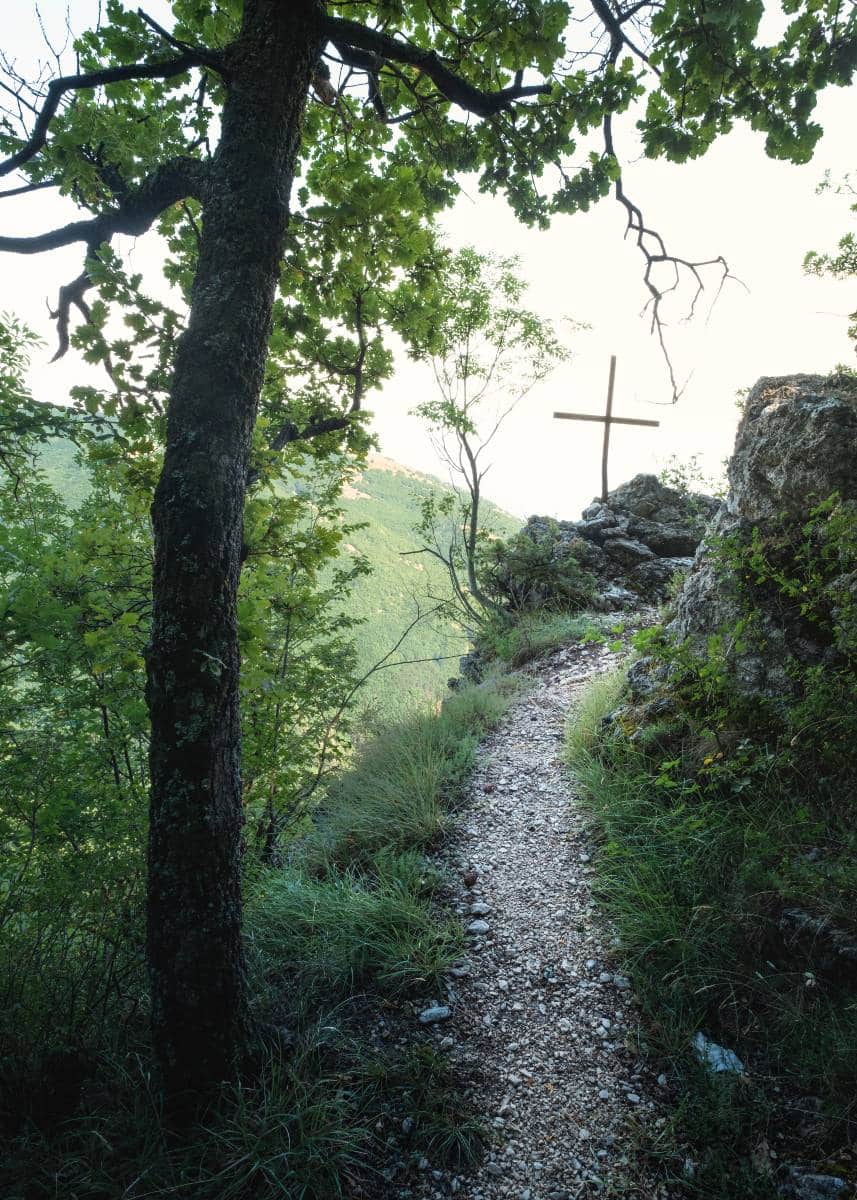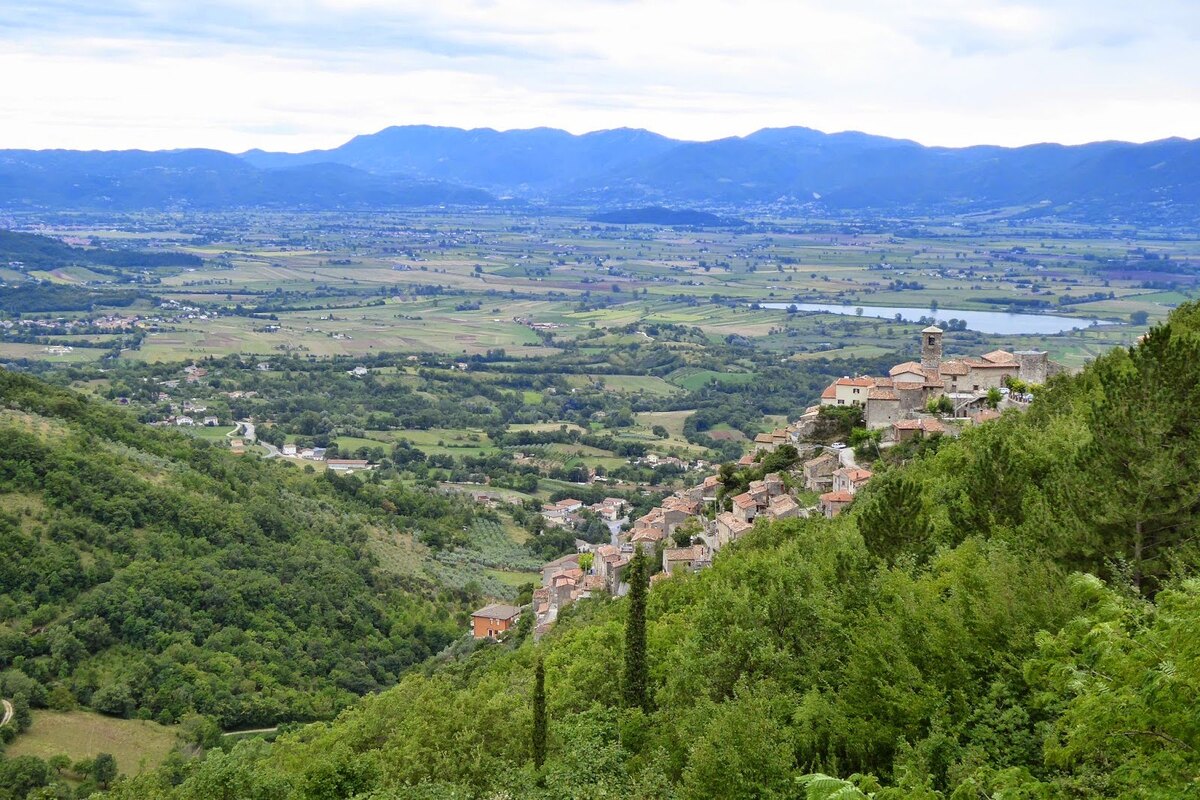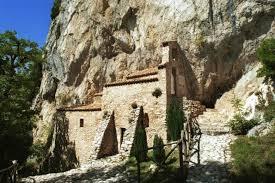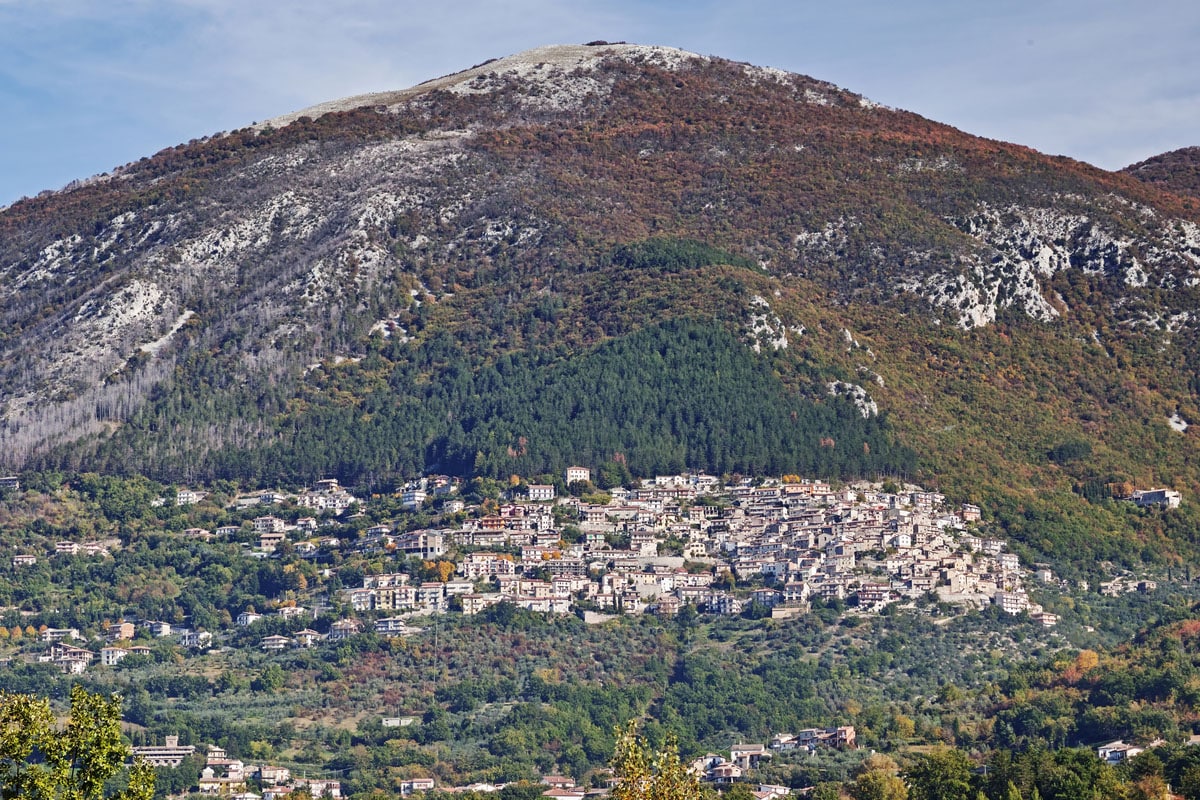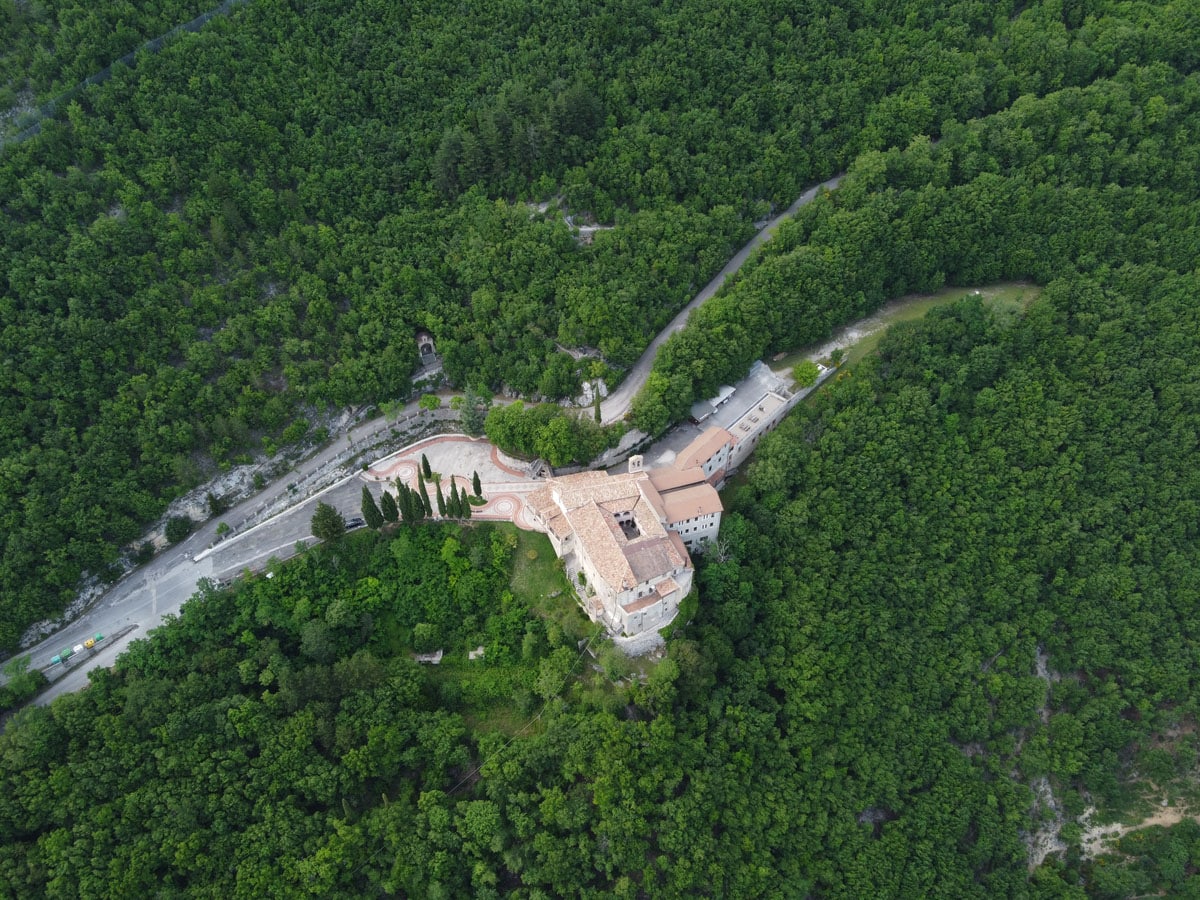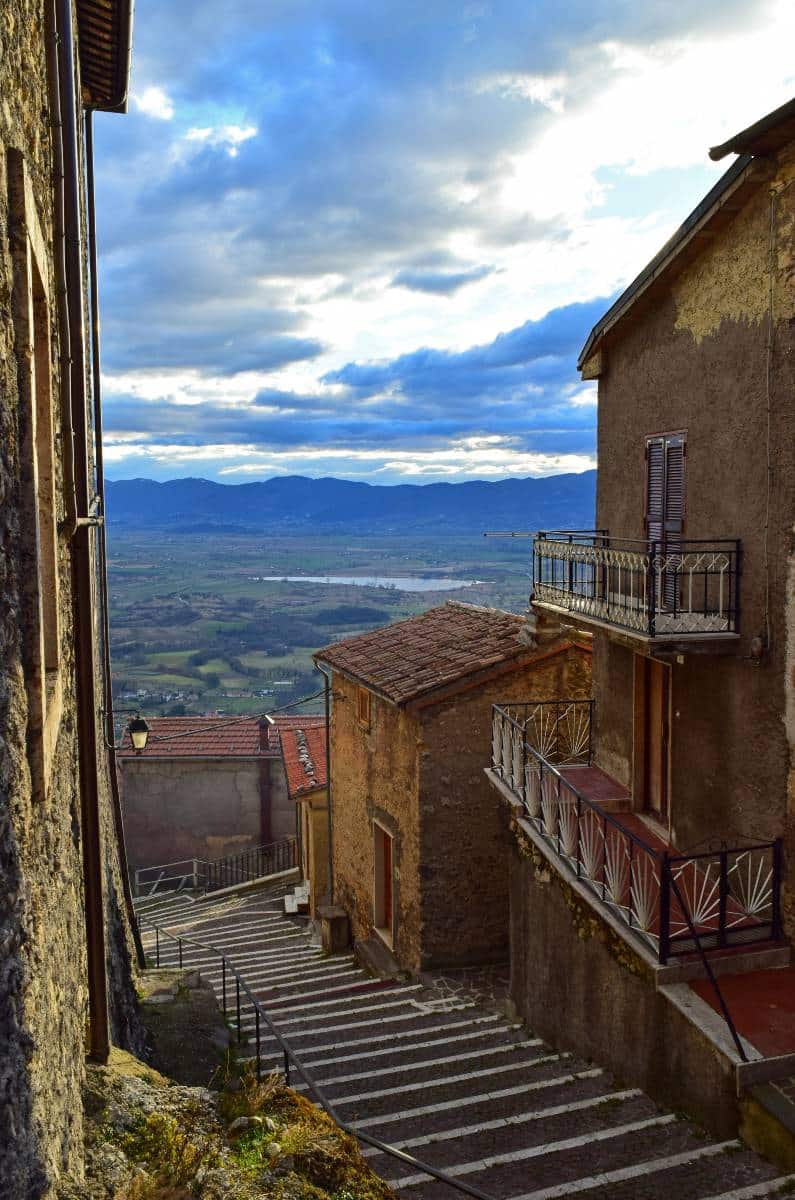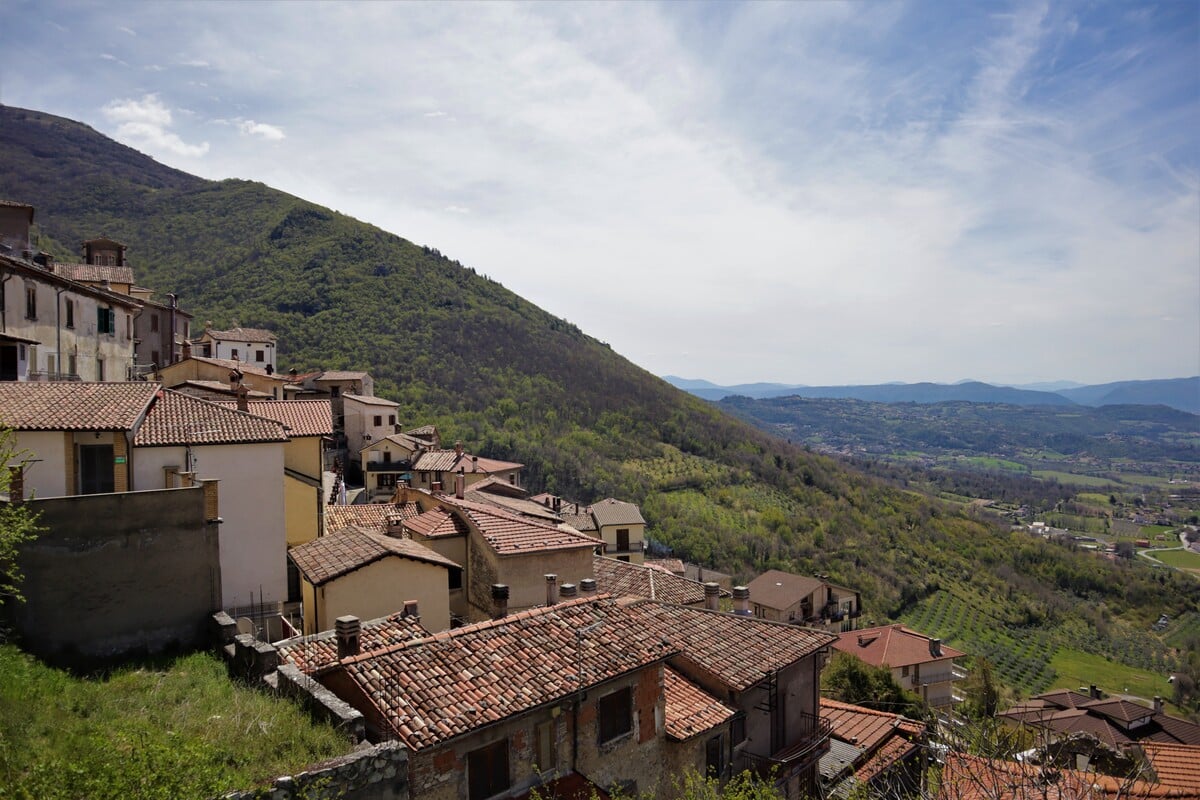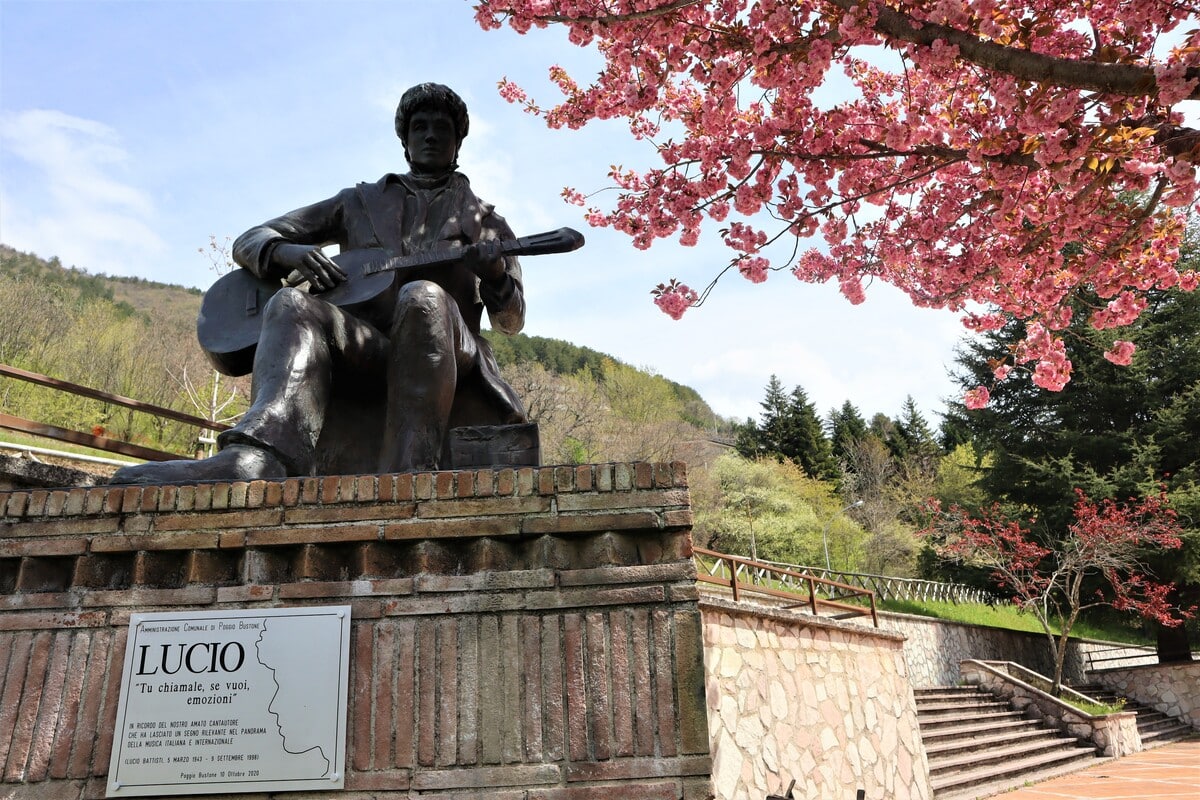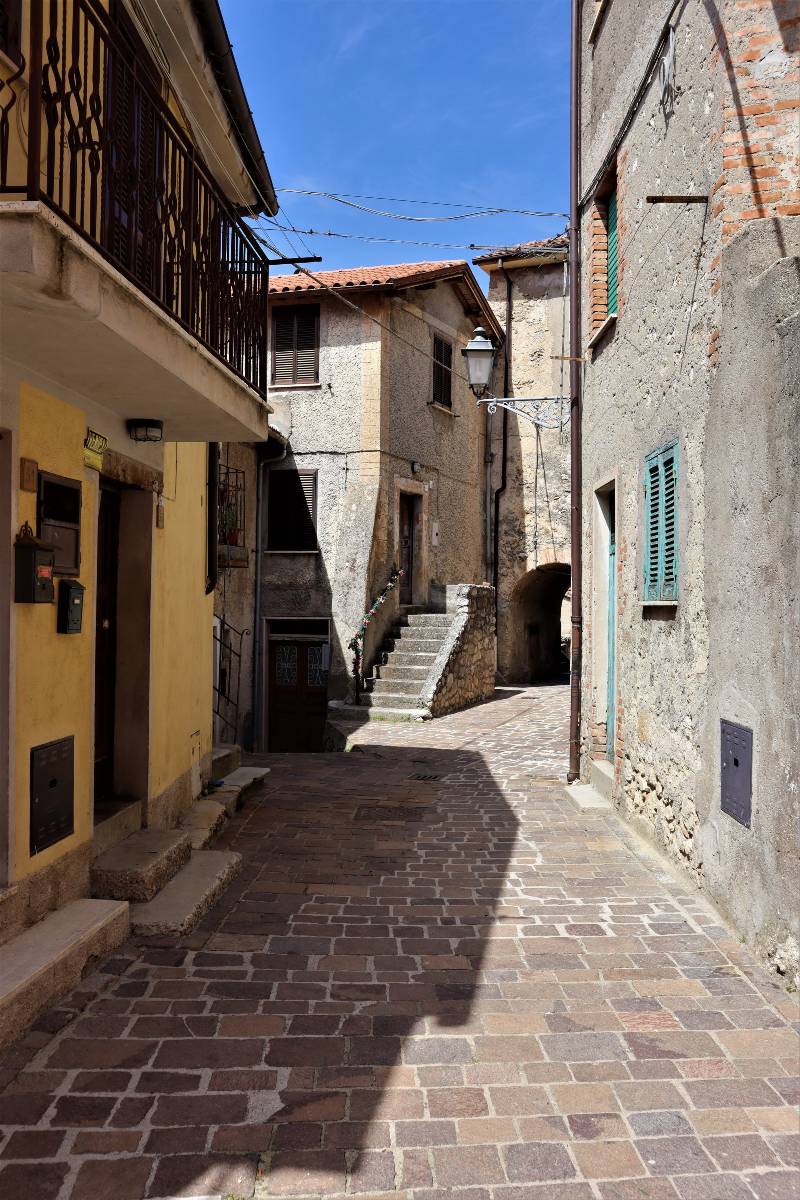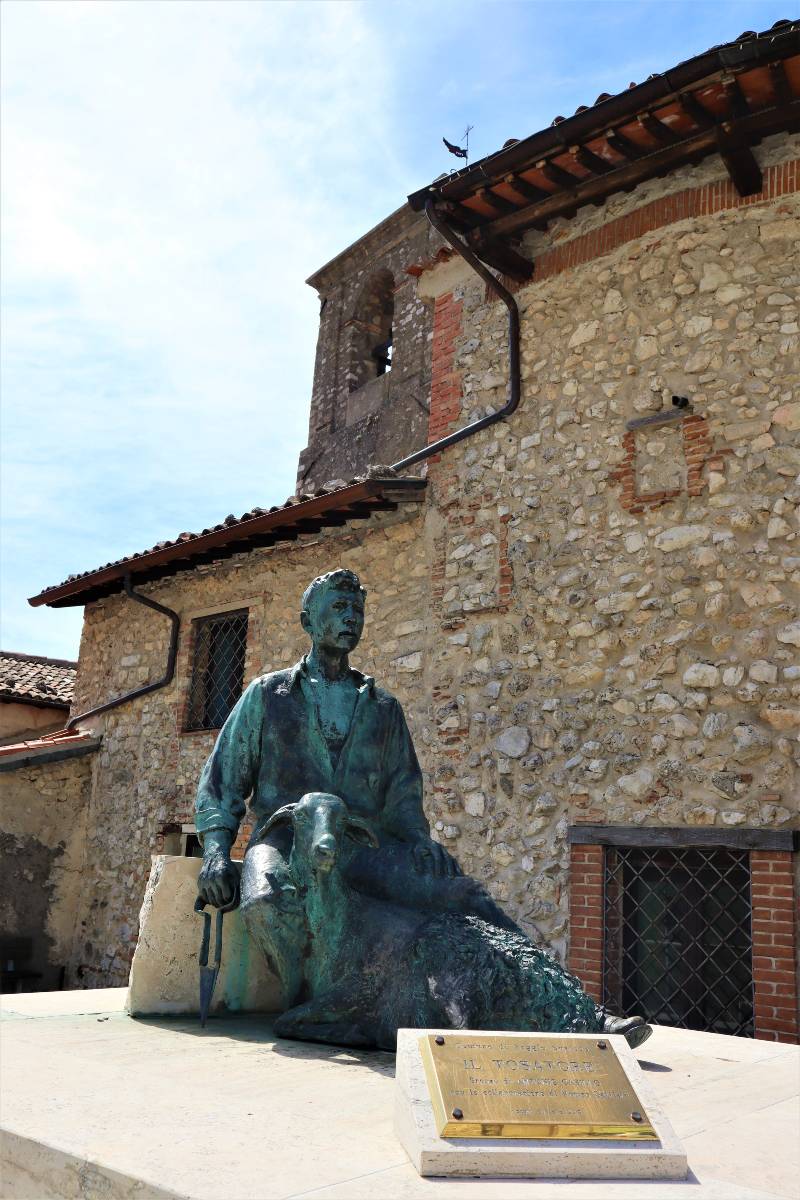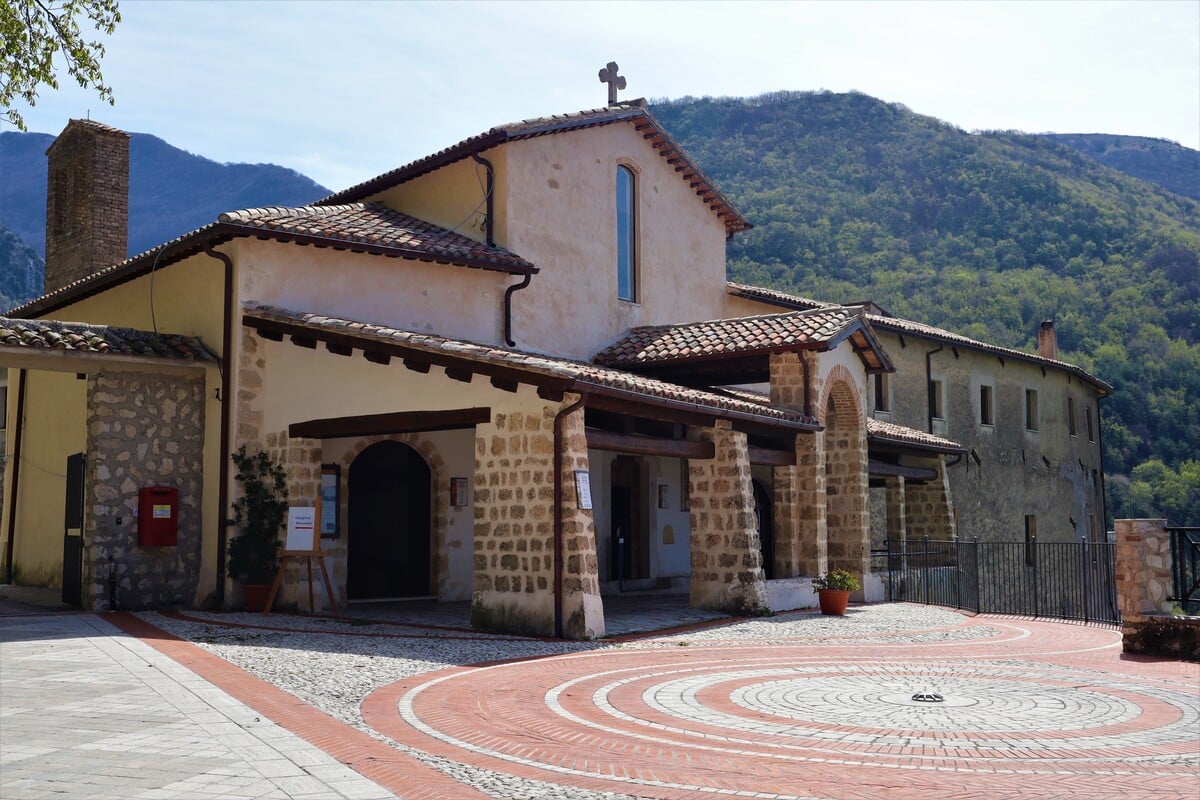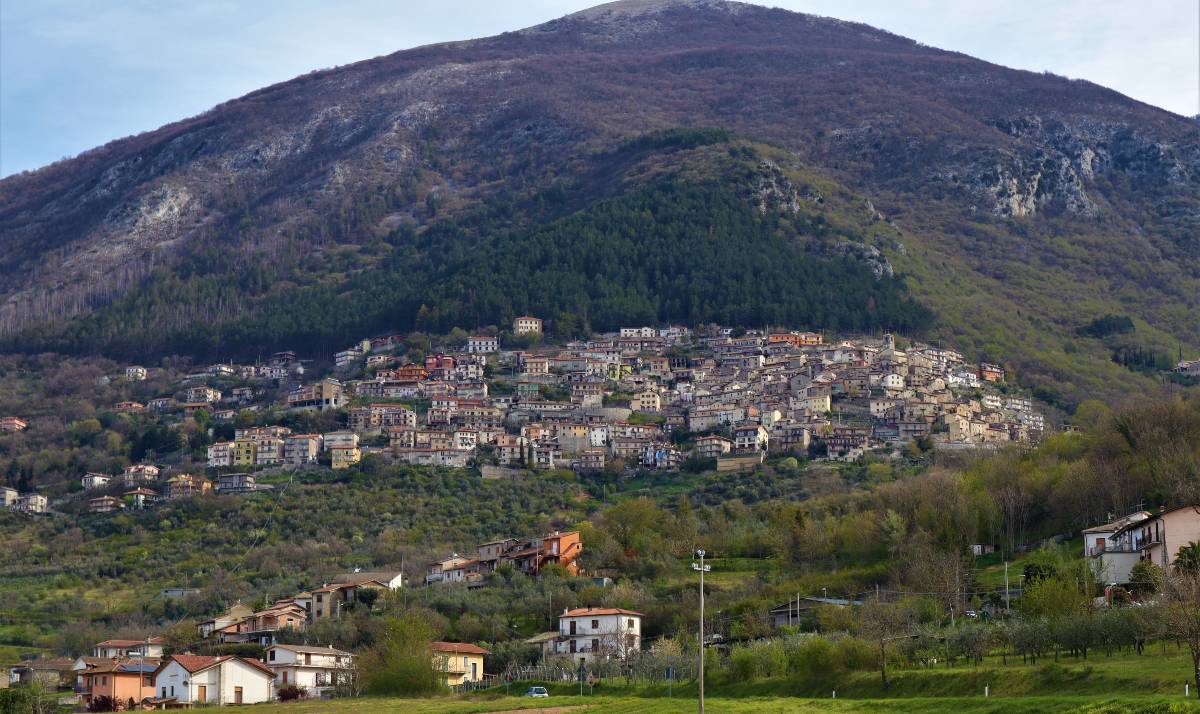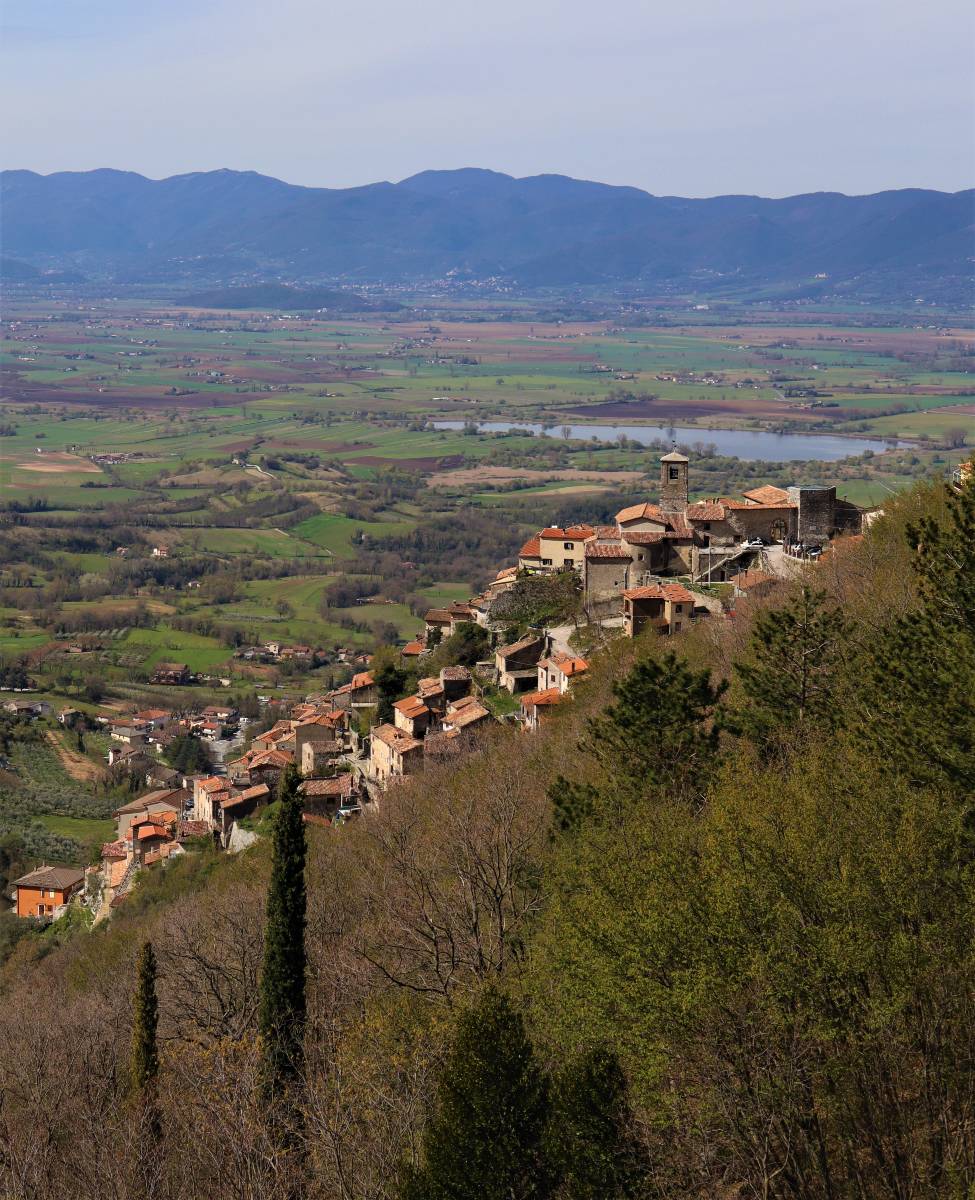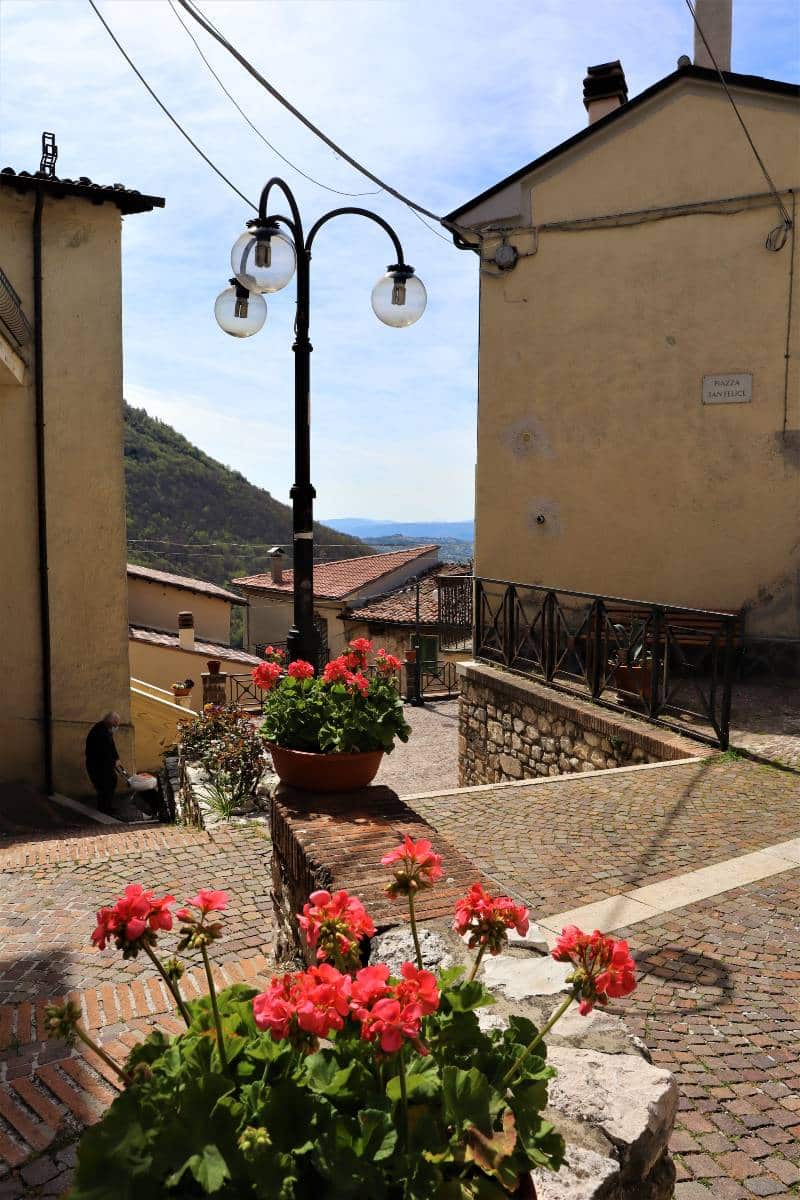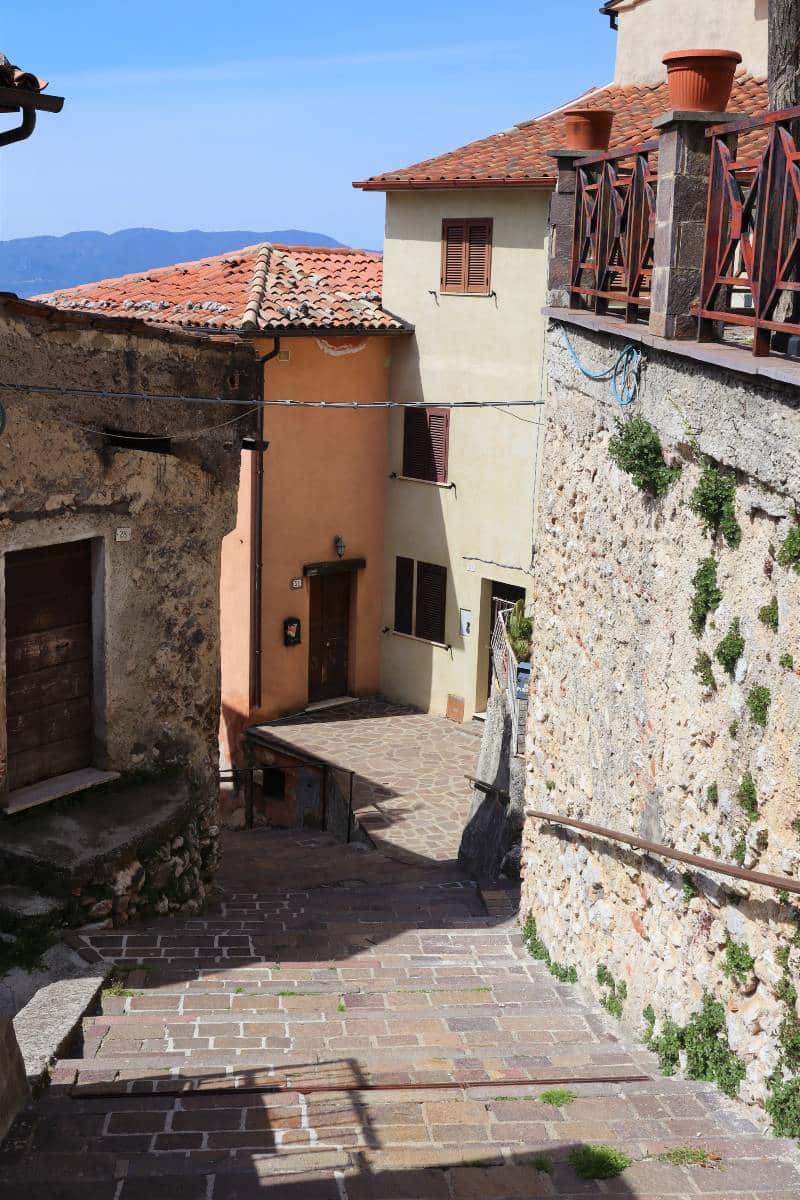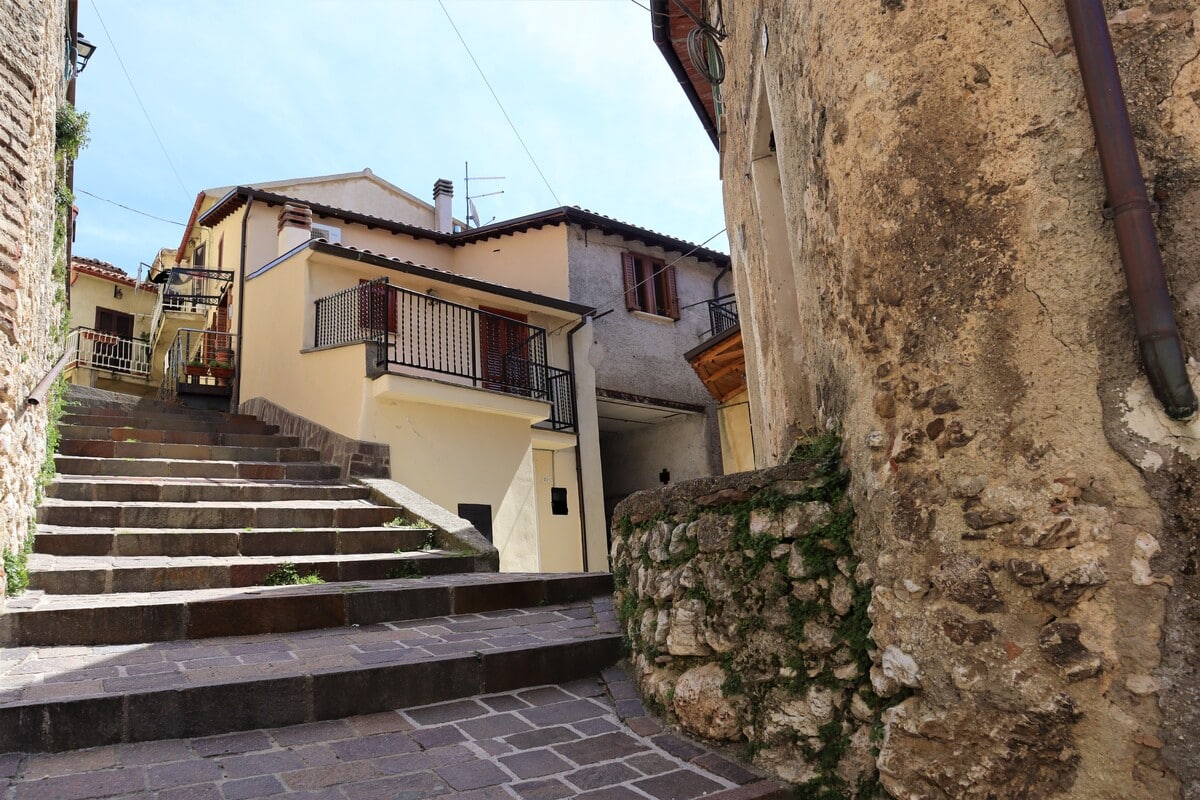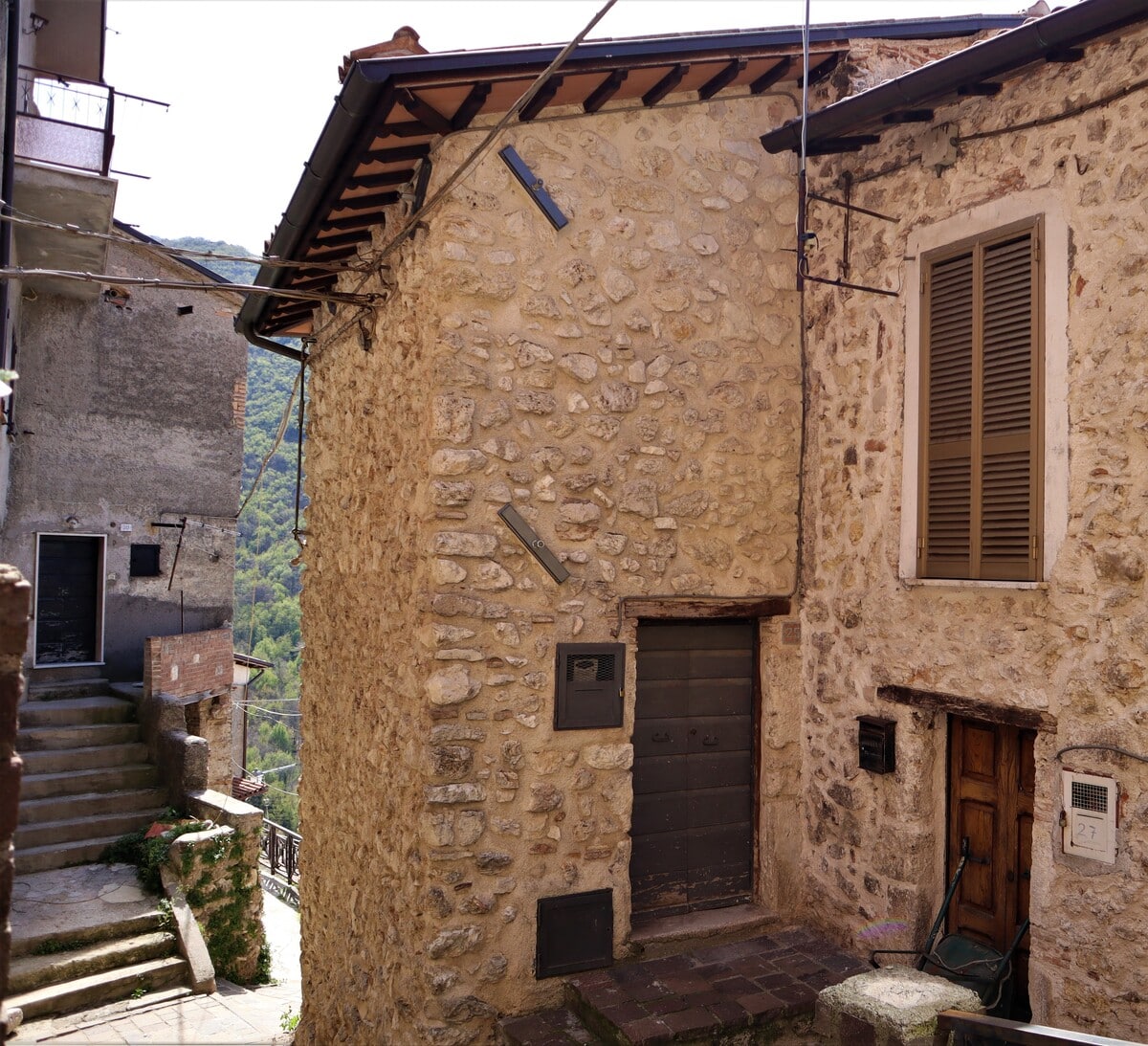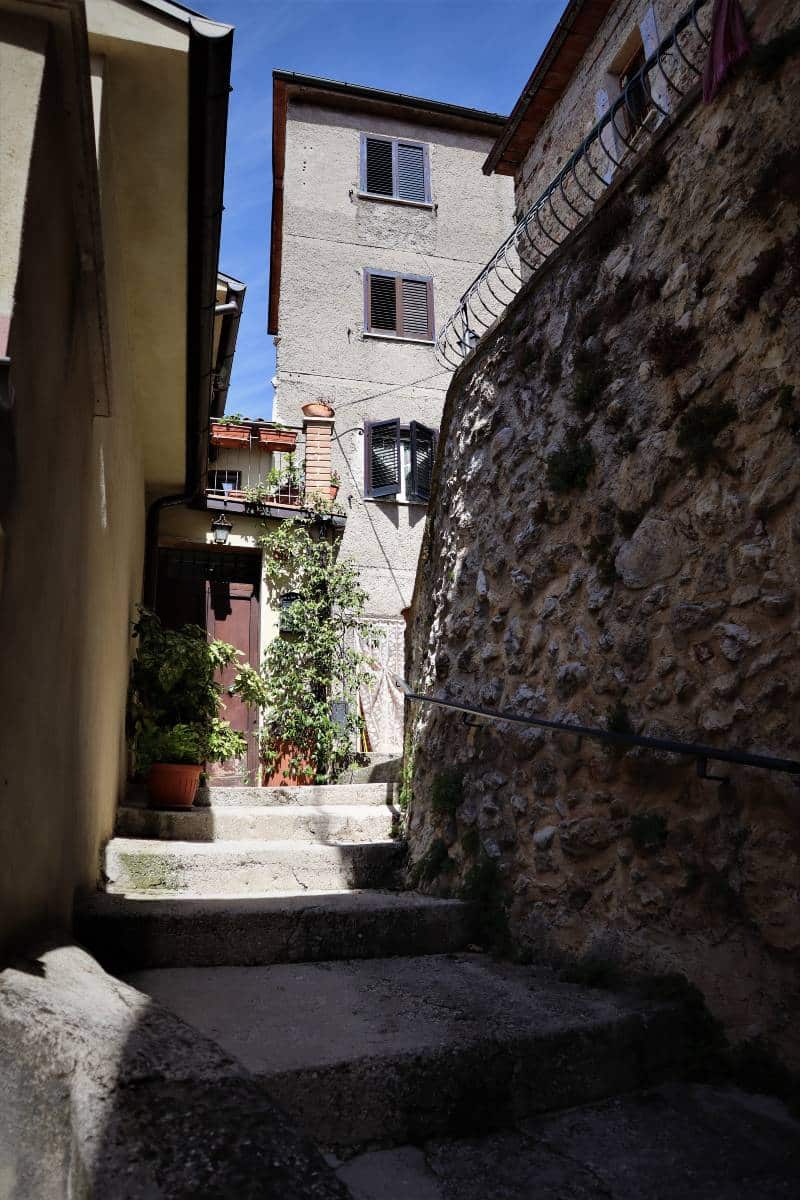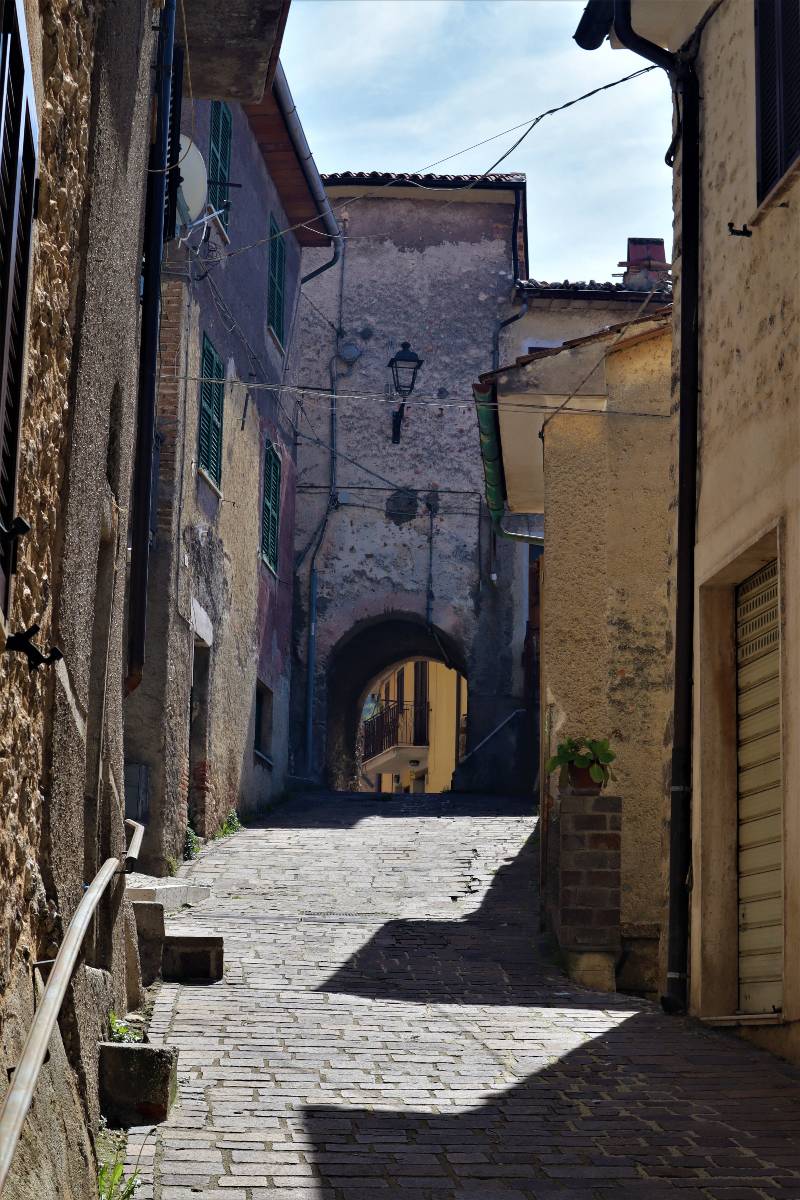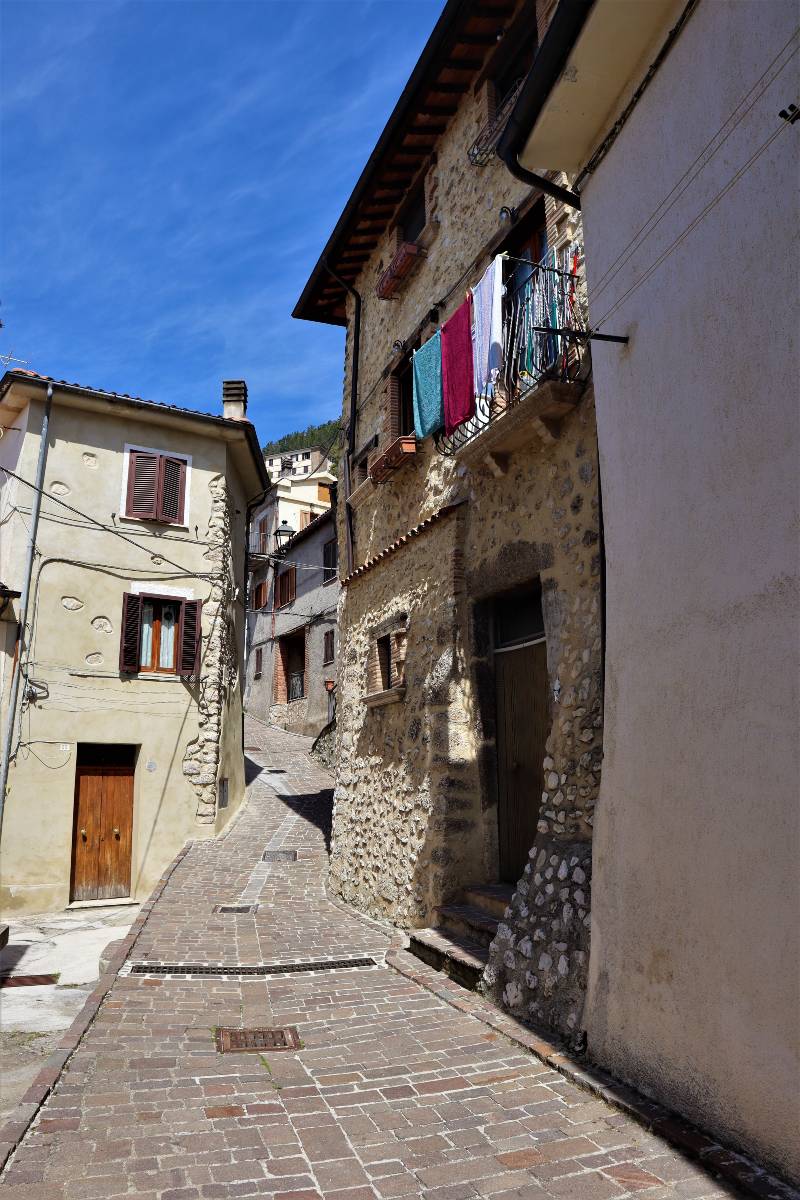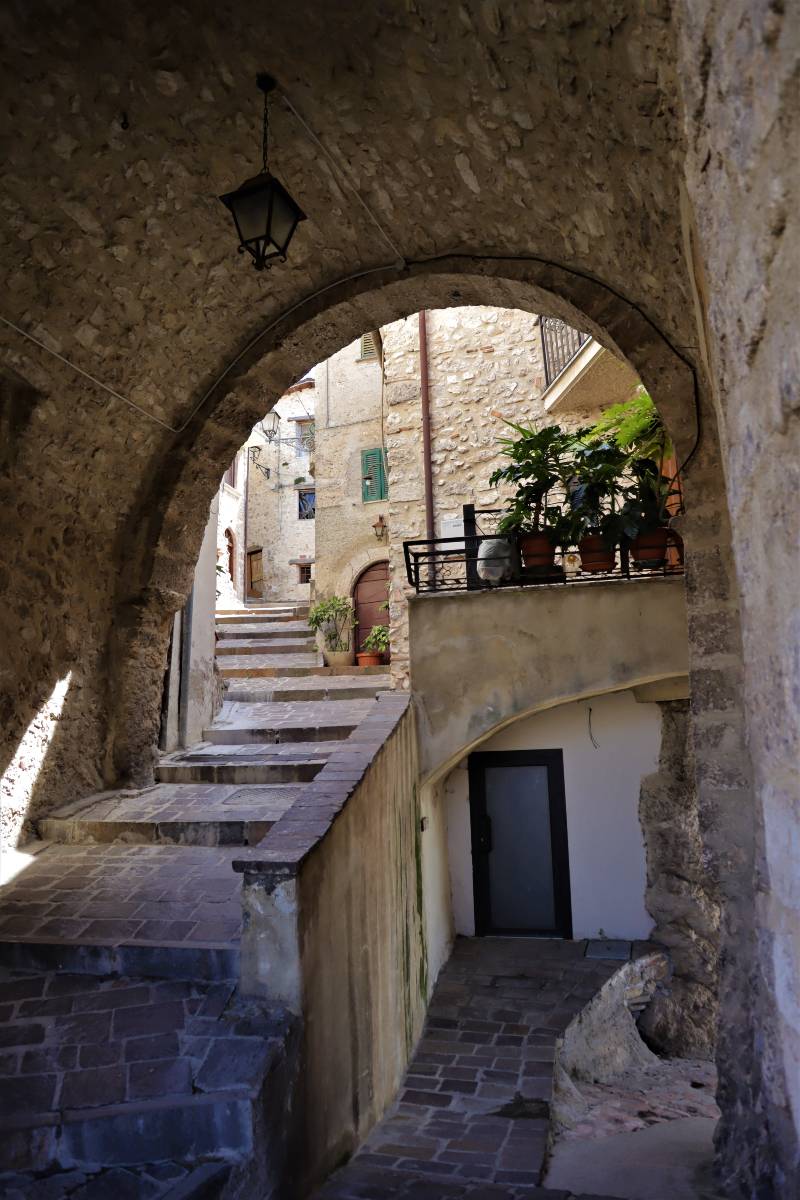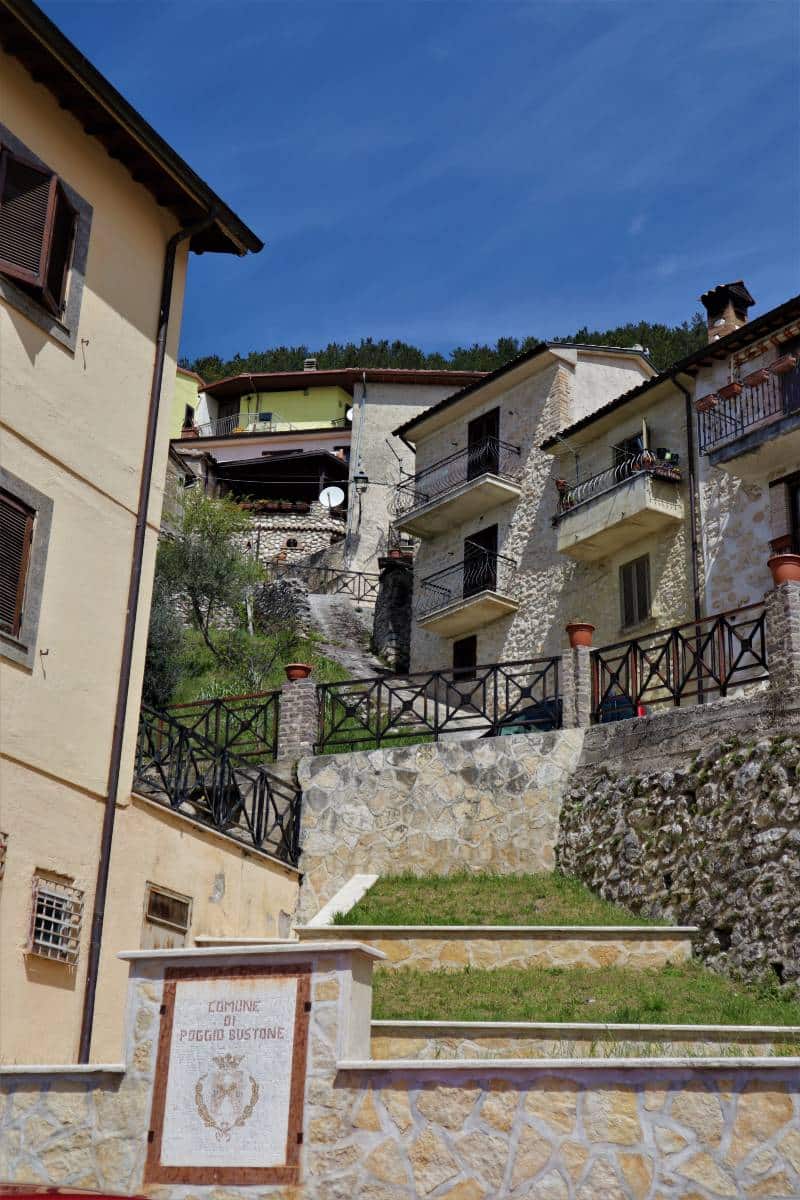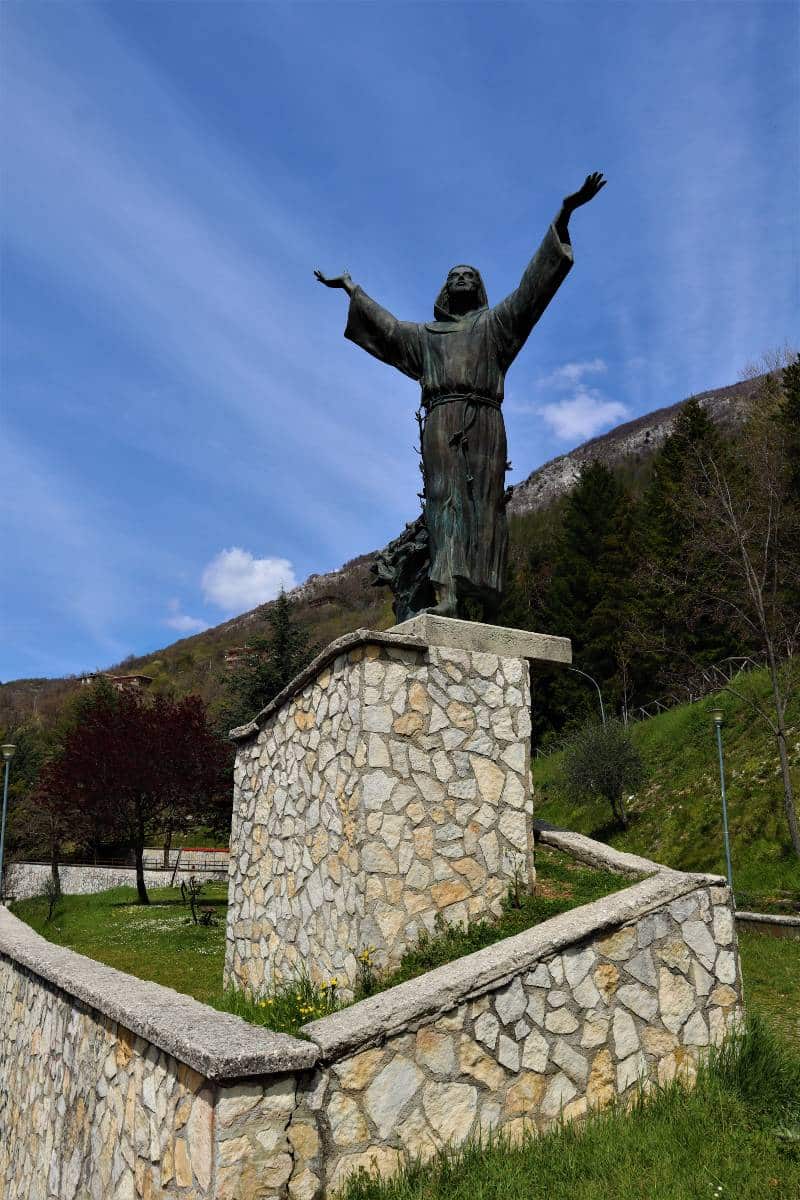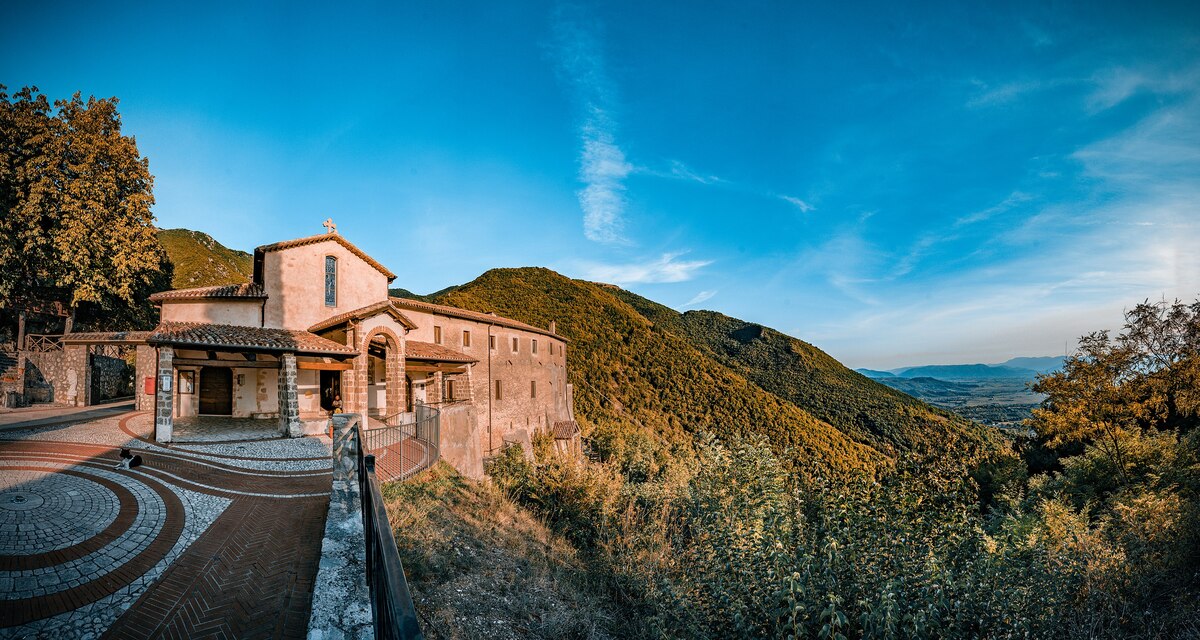The village of Poggio Bustone stands on a hill in the north-eastern part of the Piana Reatina, also known as the 'Sacred Valley' due to the presence of four Franciscan sanctuaries. The village is very close to Mount Terminillo and its origins are lost in the mists of time. The first documents attesting to its existence date back to around 1100; later, around 1208, St Francis and six of his disciples moved here to find peace and relaxation. The ancient structure of the village is reminiscent of a typical medieval village. Wandering through its streets it is possible to see the so-called Porta del "Buon Giorno" (Good Morning Door), with its Gothic arch, which in ancient times was the entrance to the village, and the pentagonal Cassero Tower, belonging to the old castle of which only a few ruins remain today.
The history and origins of Poggio Bustone
The village has very ancient origins, which some scholars date back to Roman times. The period that made the village famous, however, began at the dawn of the 12th century, when St Francis and his band of preachers chose these remote lands to gather in prayer. The foundation of the Sanctuary of San Giacomo dates back to the early 1200s. Situated overlooking the valley, it is one of the most evocative stops on the Franciscan path. In addition to the characteristic historical centre, made up of alleys, stairways and low houses, in Poggio Bustone it is possible to admire the many natural beauties, which invite you to take pleasant walks in unspoilt nature.
The Sanctuary of Poggio Bustone
Immersed in greenery, in the shadow of the mountains that give the place an even more intimate and spiritual atmosphere, is the Sanctuary of San Giacomo, which dominates the "Valle Santa" below. The convent-sanctuary dates back to the 13th century, but has been renovated several times in the course of its history. It is undoubtedly one of the most mystical places on the entire Franciscan path. It was in the peace and intimacy of these places that St Francis reconciled with man and nature, transferring part of his faith to the local people. The original monastery, founded in 1208 by St. Francis himself, was enlarged with a Gothic church, dedicated to St. James and built during the 14th century, consisting of a single nave embellished with some paintings from the 16th century. The heart, as well as the oldest part of the religious complex, is the 13th-century cloister, bearing an extraordinary painting of the Madonna and Child and some simpler paintings showing scenes of the saint's daily life. More recent is the refectory, rich in frescoes dating back to the mid-17th century depicting the Last Supper, the Immaculate Conception and some saints belonging to the Franciscan order.
The Grotto of the Revelations
Next to the cloister is the entrance to the hermitage, the place where St Francis used to gather in prayer. From the square in front of the sanctuary a path leads to the Grotto of the Revelations, outside of which a rustic chapel has been built to protect the place where St. Francis saw the angel who told him of the forgiveness of sins.
The Sacred Speco
Also near the Sanctuary is the Sacro Speco. Reached by a beautiful path, this solitary and evocative place (also made so by the legend of the Sacred Footprints), is the ideal arrival point of any walk starting from the sanctuary. There are three other places of worship in the vicinity, including Fonte Colombo, Greccio, with the village of the same name, and Santa Maria della Foresta. The Franciscan sanctuaries only further enhance the Franciscan path of the Sacred Valley of Rieti, which is already a must in itself, thanks to the suggestions offered by the mountains, the immaculate and wild nature and the mystical atmosphere that pervades it.
What to do and eat in Poggio Bustone
In addition to trekking and nature walks, Poggio Bustone offers a wealth of traditions and a typical cuisine not to be missed. The presence of St. Francis is commemorated by three different festivities: the 4th of October, which includes the passing of the "tambourine" and recalls the Saint's greeting; the Monday of the Angel, with a procession to the Franciscan hermitage; and the 2nd of August, culminating in the so-called Festa del Perdono. Poggio Bustone is one of the main stops on the Franciscan Way, the itinerary that links together the places that bear witness to the passage and work of the Saint born in Assisi. Walkable on foot, by bicycle or on horseback, this path touches enchanting places, able to conquer any visitor. But the surprises don't end here, as Poggio Bustone is one of the main centres for the production of porchetta, a protected food product. Tradition has it that the recipe was invented by a local butcher, Moretto. This tradition is carried on by the annual festival held on the first Sunday in October. As confirmed by the Official Gazette of 1900, the local porchetta was even exhibited at the Paris Expo that year.


